Murals at the Shiodome Station
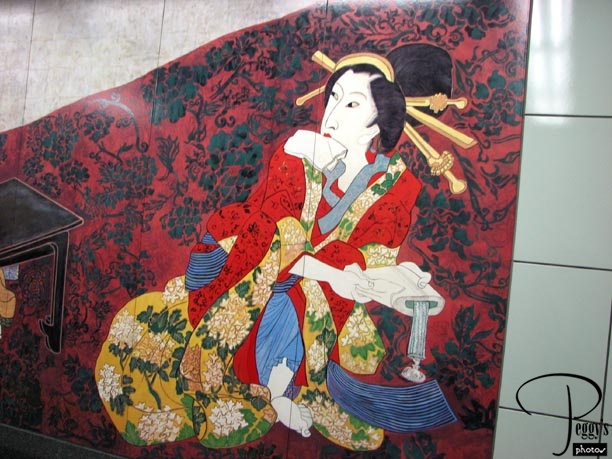
This is our last day in Tokyo before going home. I had Keith as my travel companion today. For my last day here, I had the hotel buffet for breakfast––no more donuts bought at the subway stations. We checked out of the hotel and put our bags in storage. We had a full morning for sightseeing as our airport bus didn’t come until 1:30 p.m. Keith and I took the Yurikamone Monorail to the Shiodome Station, one station before Shimbashi, and transferred to the Oedo Line to go one stop to the Tsukijishijo Station. It took us much more time than we anticipated as we had a very long underground walk at the Shiodome Station. We saw this beautiful mural and the following murals at the Shiodome Station.

Murals at the Shiodome Station
Murals at the Shiodome Station
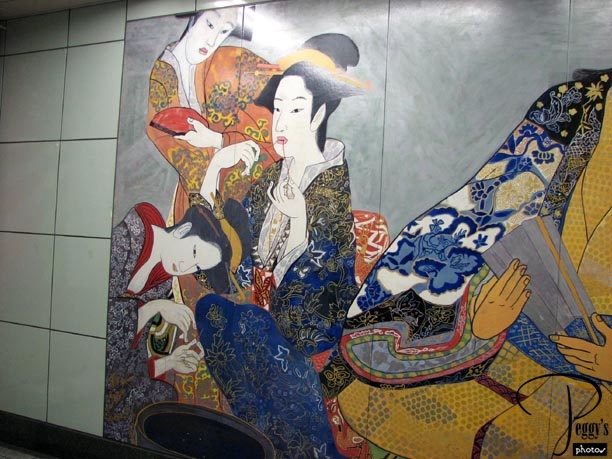
Another of the murals.

Murals at the Shiodome Station
Murals at the Shiodome Station
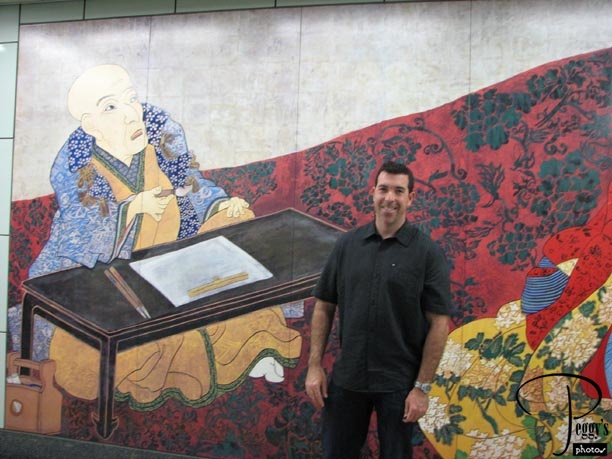
That’s Keith in front of the mural.

Murals at the Shiodome Station
Murals at the Shiodome Station
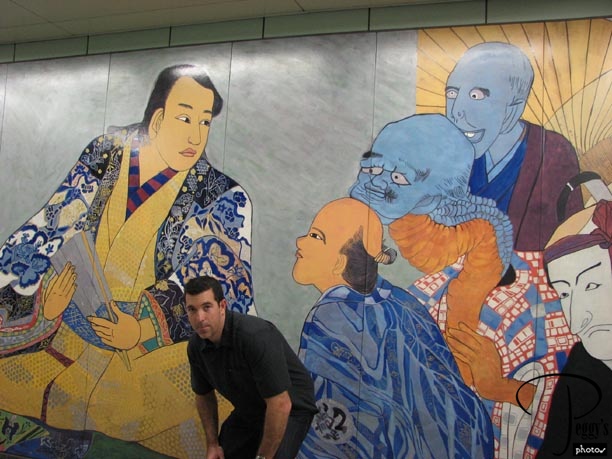
Also, Keith.

Murals at the Shiodome Station
Tokyo (Tsukiji) Central Wholesale Fish Market
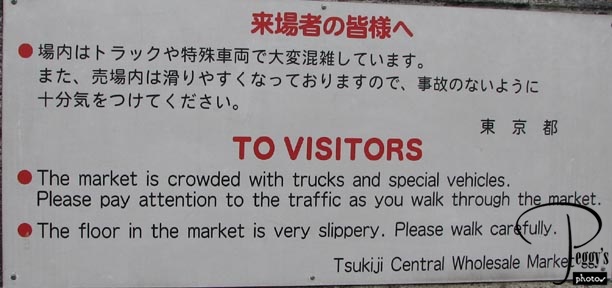
It was a very short walk from the Tsukijishijo Station to the fish market. We saw this sign outside the market. I don’t think their warnings are adequate––if you aren’t very very aware of what is going on around you when you are in the market, you can be quite easily run over by a motor scooter, van, truck, and numerous other motorized contraptions.

Tokyo (Tsukiji) Central Wholesale Fish Market
Entrance to the Fish Market
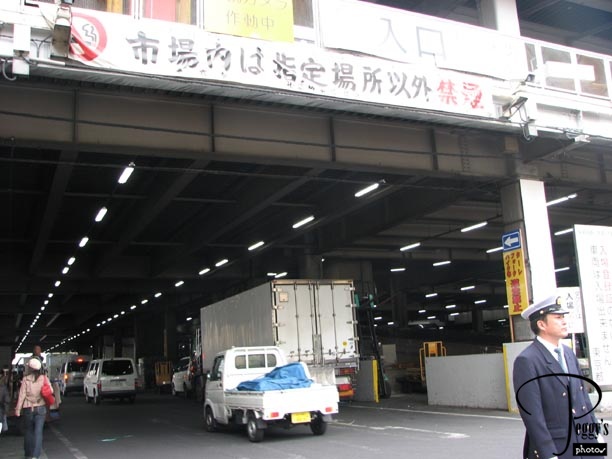
The Tokyo (Tsukiji) Central Wholesale Fish Market is the world’s largest fish market, selling 450 types of fish and other sea creatures from over 1700 stalls. Every morning, except for Sunday, from 5 a.m. to 10 a.m., auctions are held. About 15,000 restauranteurs and food sellers from all over Tokyo attend these auctions. The tuna auction is held at 5 a.m. Photo: The entrance to the fish market. Keith guided me to the entrance, expertly avoiding many potential people/vehicle collisions.

Entrance to the Fish Market
Tokyo (Tsukiji) Central Wholesale Fish Market
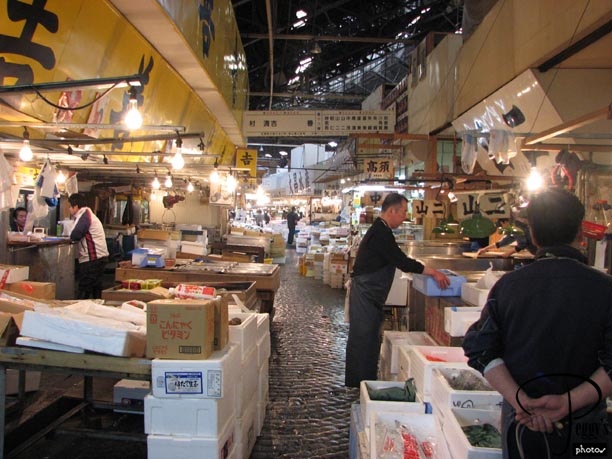
Inside the fish market. The market is noisy and extremely busy––it is more like bedlam––but it doesn’t smell fishy. There is also a wholesale vegetable market somewhere in this complex.

Tokyo (Tsukiji) Central Wholesale Fish Market
Tokyo (Tsukiji) Central Wholesale Fish Market
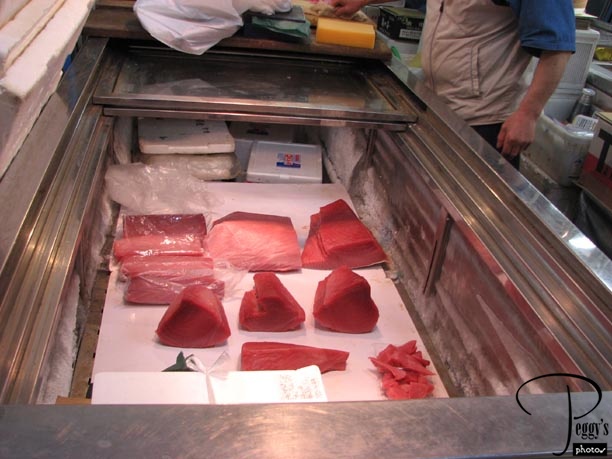
I have put the photos I took at the fish market on a slide show on this website: Go to Slide Shows, Asia, Japan, “Tokyo: Central Wholesale Fishmarket.” I learned something new visiting this market––that scallops grow in hard shells. I always thought that they floated in the ocean as jelly fish do. I recognized some barnacles––I had seen them for the first time in Portugal last year. If you see any pieces of fish on the slide show that look like the cuts in this photo, they are tuna. Keith said the middle back piece is tuna stomach, a delicacy.

Tokyo (Tsukiji) Central Wholesale Fish Market
Tokyo (Tsukiji) Central Wholesale Fish Market
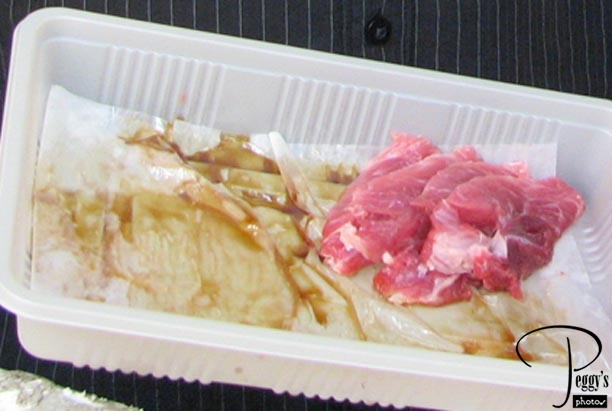
Keith ate the fresh tuna in this photo for his mid–morning snack––he said this was tuna cheek and cost him 500 yen.

Tokyo (Tsukiji) Central Wholesale Fish Market
Tokyo (Tsukiji) Central Wholesale Fish Market
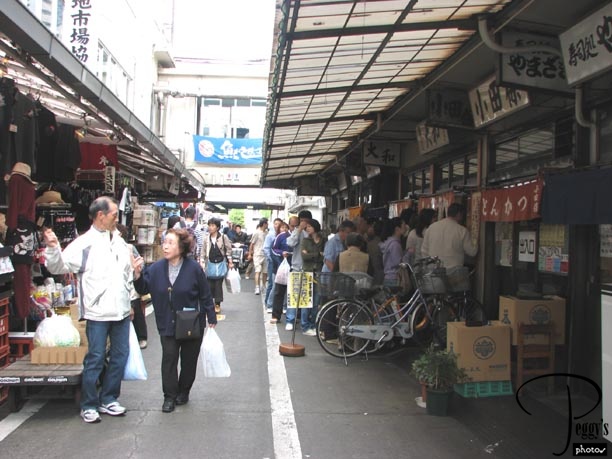
The people are the right of the photo are lining up for the sushi restaurants to open. The sushi must be fresher here than anywhere else. On the left side of the photo are shops. Keith and I both bought powdered green tea here to take home.

Tokyo (Tsukiji) Central Wholesale Fish Market
Tokyo (Tsukiji) Central Wholesale Fish Market
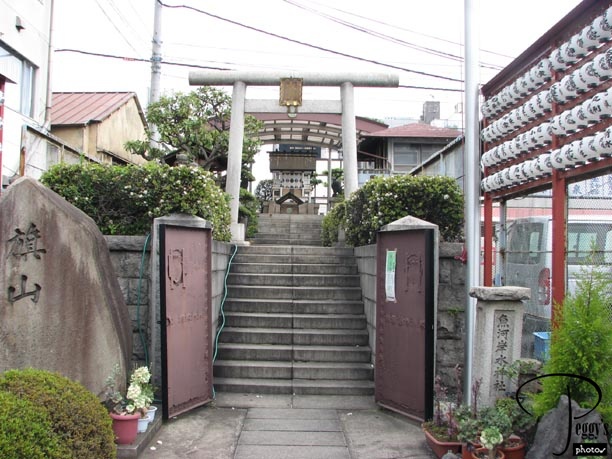
Right before the main entrance to the fish market is the Namiyoke Inarit Jinja Shrine. The name means “Wave–repelling Fox Shrine.” It is where fishermen and traders pray for both safety and prosperity.

Tokyo (Tsukiji) Central Wholesale Fish Market
Tokyo (Tsukiji) Central Wholesale Fish Market
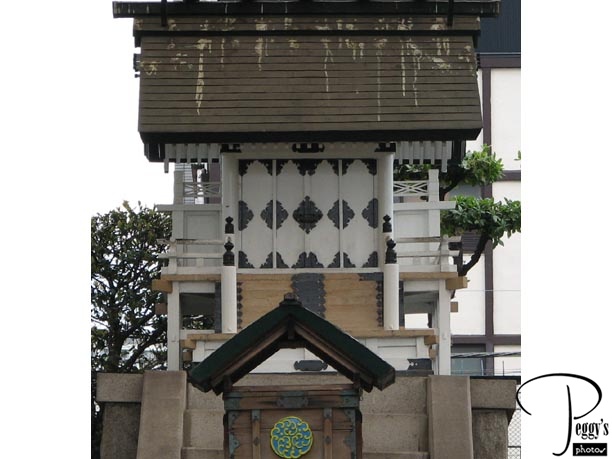
Close–up of the shrine.

Tokyo (Tsukiji) Central Wholesale Fish Market
On the Street
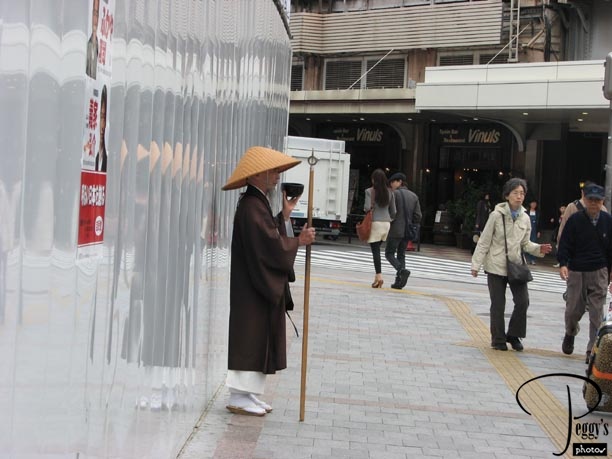
Outside the fish market, we saw this man. If you want your photo taken with him, just hand him some yen. From the fish market, we got back on the subway at the Tsukishima Station to take the Oedo Line to the Ueno–okachimachi Station, where we would transfer to the Ginza line to take us one stop to the Ueno Station, where we were to visit the Ueno Park.

On the Street
Ueno Park
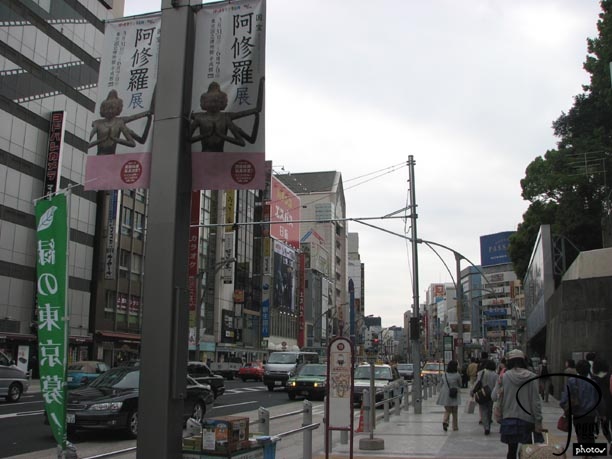
An entrance to Ueno Park. This is the first place I had seen “artists” selling their “creations”––the artwork was really bad.

Ueno Park
Ueno Park
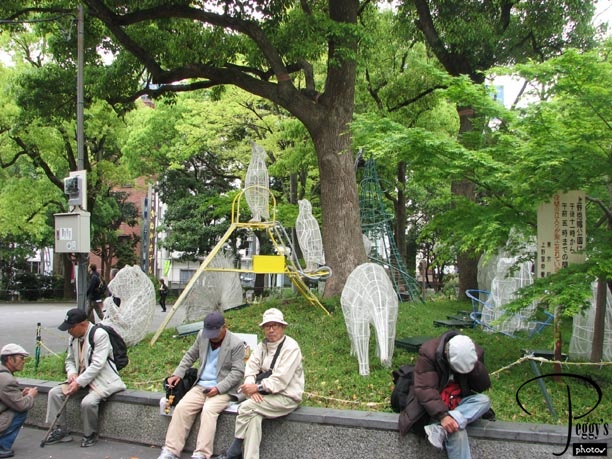
Interesting wire sculptures in the park.

Ueno Park
Ueno Park
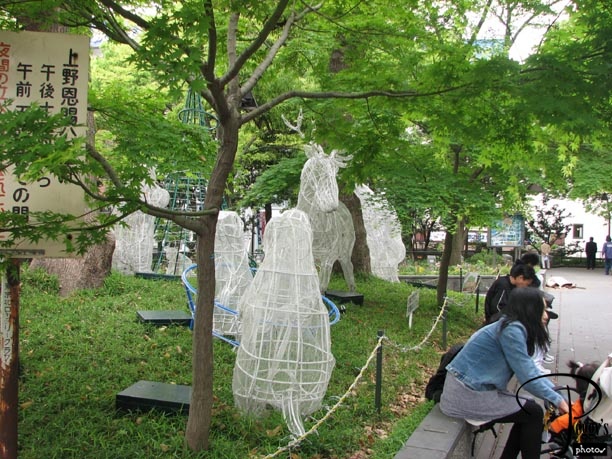
More of the wire sculptures. Perhaps they will be covered with hedges later on.

Ueno Park
Ueno Park
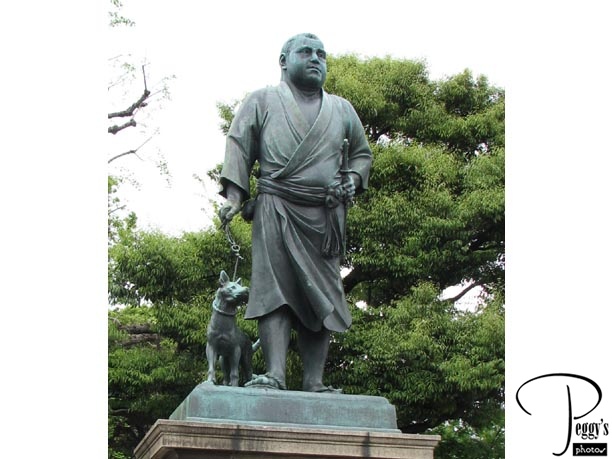
Statue of Takamori, the leader of the victorious Meiji forces. Later he led the Satsuma rebellion in 1877 against the emperor. When his rebellion failed, he killed himself. He was pardoned after his death and this statue of him was built in 1899.

Ueno Park
Ueno Park
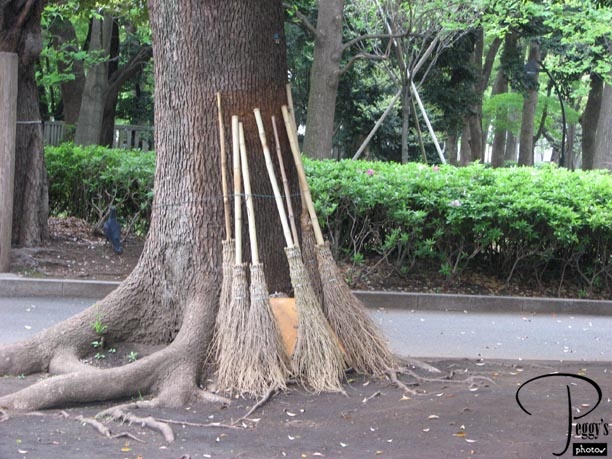
Japanese brooms at the park.

Ueno Park
Ueno Park
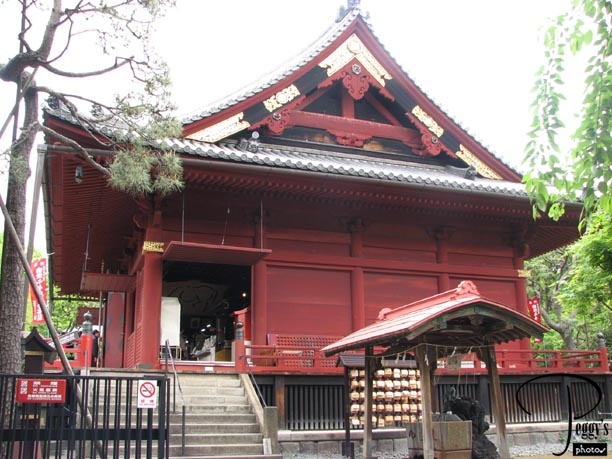
Tokugawa Ieyasu, the first Tokugawa shogun (see the last album) built the Kanei–ji Temple and its subtemples here in the 17th century to ward off evil spirits from the northwest. Photo: One of the original Kanei–ji temples, dating back to 1631. The temple is dedicated to Senju (1000 arms) Kannon.

Ueno Park
Ueno Park
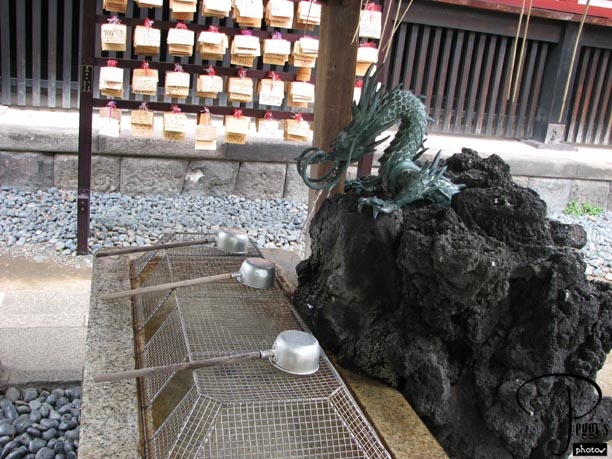
Dragon at the purification pavilion.

Ueno Park
Ueno Park

We saw this temple in the distance and walked down some stairs to see it.

Ueno Park
Ueno Park
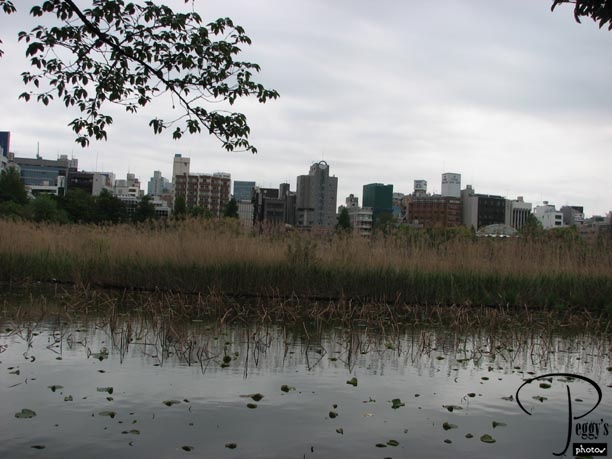
On the way to the temple, we passed one of the Shinobaza ponds. Thousands of migrating birds stop here every year.

Ueno Park
Ueno Park
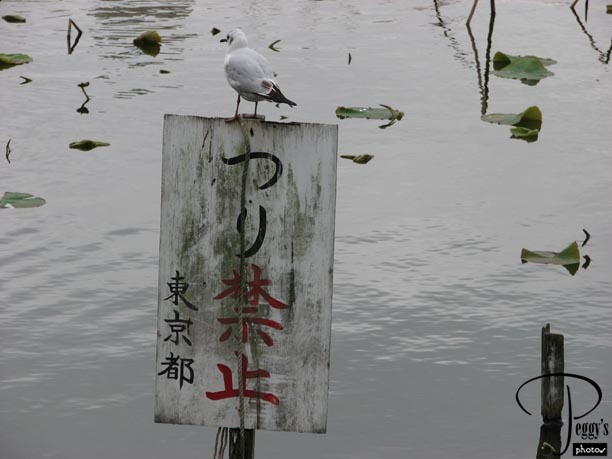
A Japanese seagull in the pond.

Ueno Park
Ueno Park
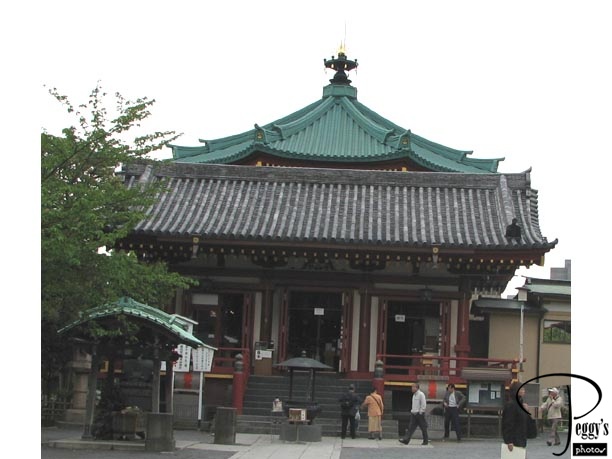
Also on of the Toshogu temples and one of the few remaining Edo–era structures in Tokyo. Tokugawa Ieyasu was first buried here, before being reburied at Nikko (see last album).

Ueno Park
Ueno Park
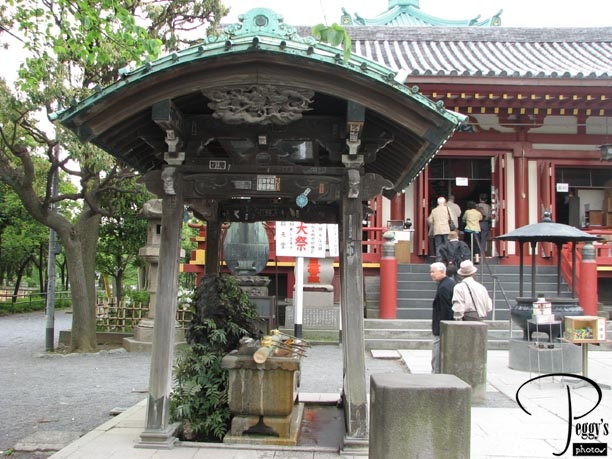
The purification pavilion.

Ueno Park
Ueno Park
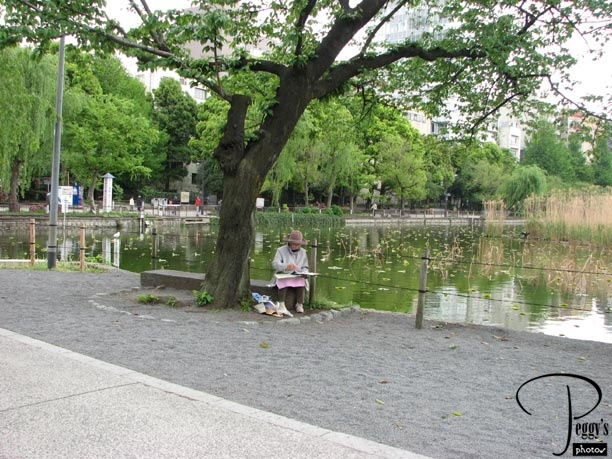
An artist painting here.

Ueno Park
At the Shimbashi Station
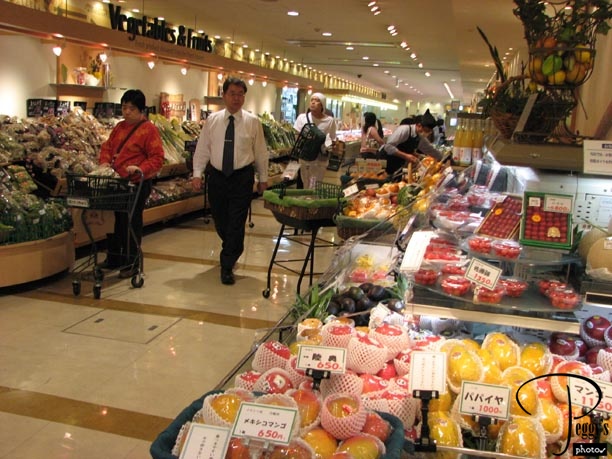
From the Ueno Station, we took the Ginza line to Shimbashi. We climbed up a different set of stairs than I had before to get above ground. A gourmet food store was here––Keith had already been at the store and he would have told me about it if he could have remembered which of the many exits out of Shimbashi Station to take to find it. Keith bought packaged sushi at the store for his lunch. He said the sushi was at least 1/2 the price it is in the U.S.

At the Shimbashi Station
At the Shimbashi Station
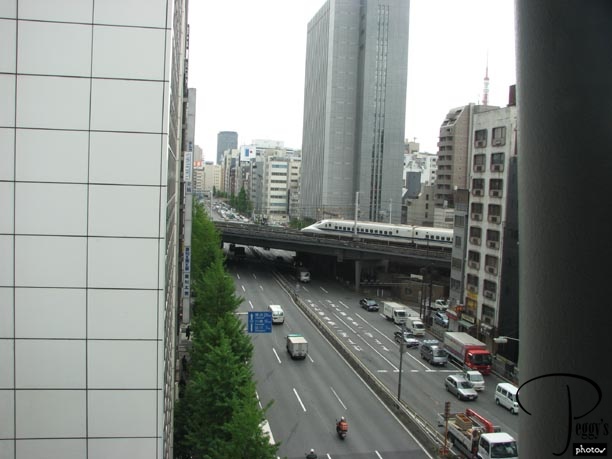
Before taking the monorail back to our hotel, I ate a chicken salad sandwich at the Starbucks at the monorail station––very good. We also caught a glimpse of the Shinkansen (bullet train) traveling through Tokyo. In the city, the train moves slowly.

At the Shimbashi Station
Odaiba
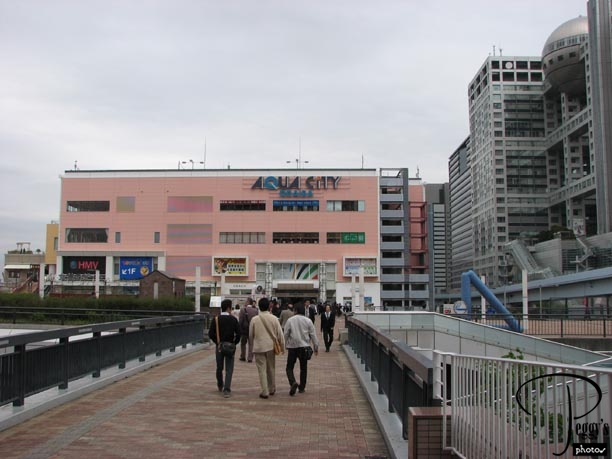
Keith went right back to the hotel and I walked around the promenade between our hotel and Aqua City. This is the first time I had seen it in daylight.

Odaiba
Odaiba
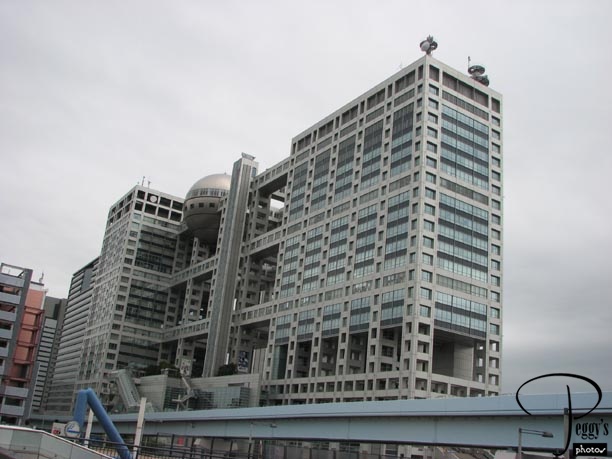
The Fuji–TV building across from Aqua City.

Odaiba
Odaiba
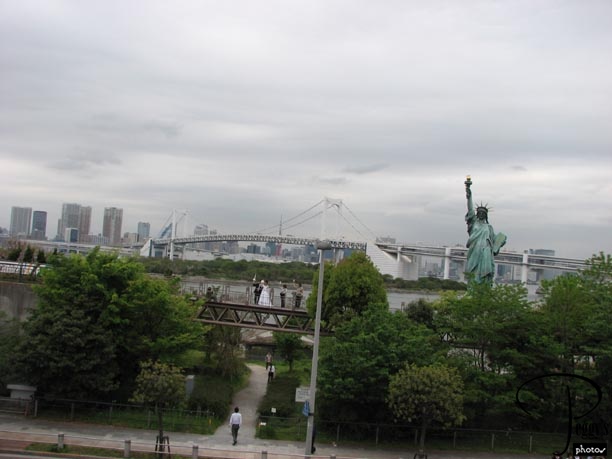
Rainbow Bridge and the Statue of Liberty. I noticed a couple in their wedding clothes being photographed on a bridge span.

Odaiba
Odaiba
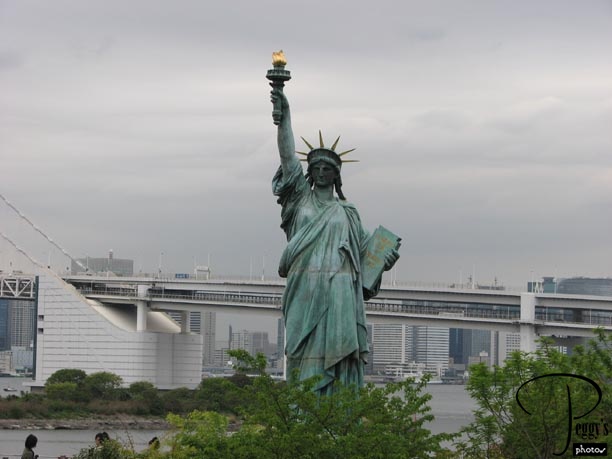
A closer–up photo of the Statue of Liberty.

Odaiba
Odaiba
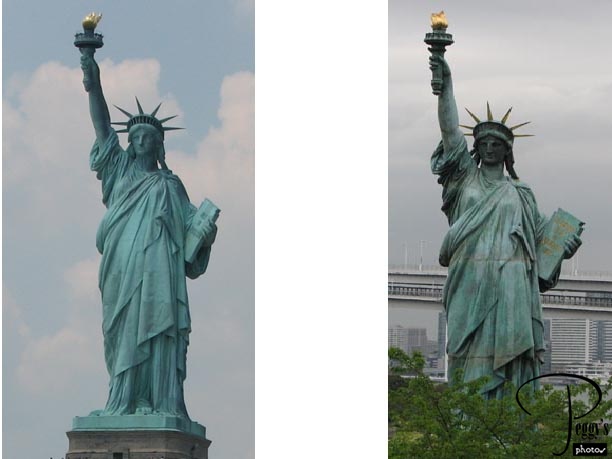
The two Statues of Liberty. The photo on the left I took in New York City last year. The one on the right is the one I just took in Odaiba. The statues are very very similar.

Odaiba
Odaiba
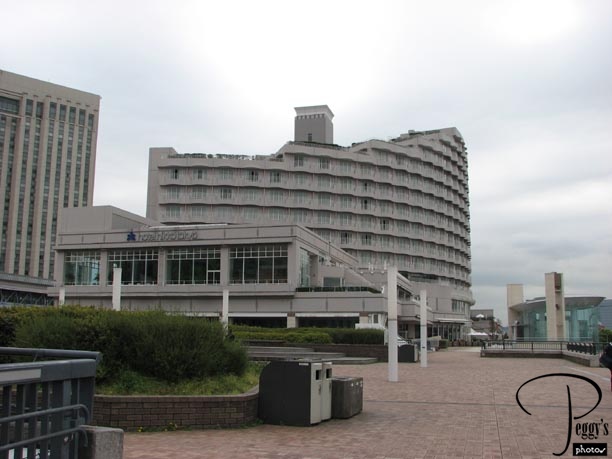
Our hotel, the Hotel Nikko Tokyo.

Odaiba
Odaiba
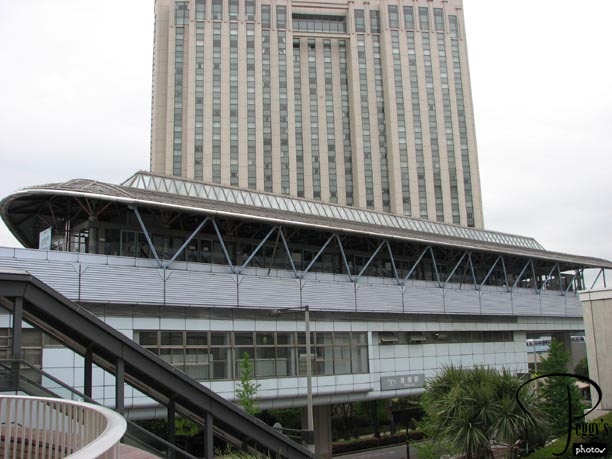
The monorail station.

Odaiba
Odaiba
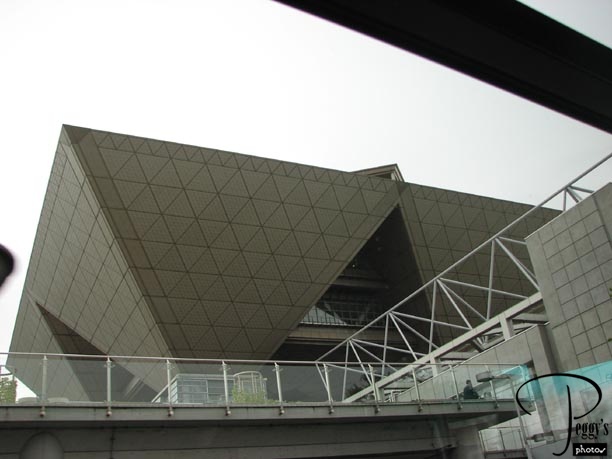
The airport bus picked us up at our hotel exactly at 1:30 p.m. It next picked up people at other places on Odaiba. Here, it picked up passengers at the Tokyo Big Sight––the convention center. The island of Odaiba has some cutting–edge, futuristic architecture, the Big Sight building being one.

Odaiba
Odaiba
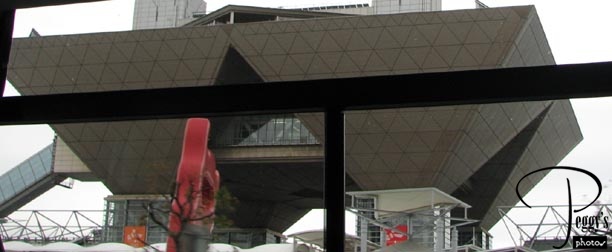
Another view of the Tokyo Big Sight. A hand saw sculpture is in front of it.

Odaiba
Odaiba
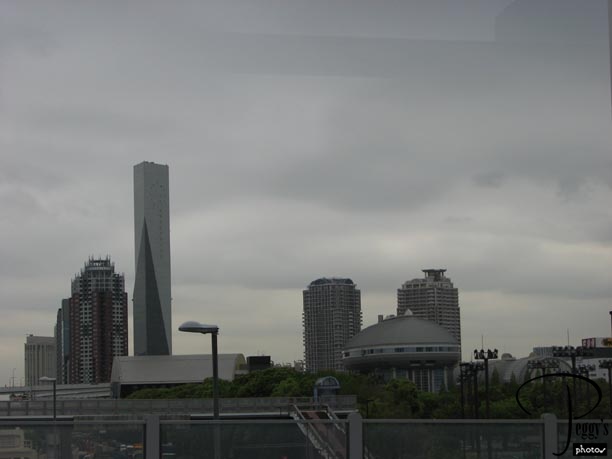
Some tall buildings and a mushroom.

Odaiba
Odaiba
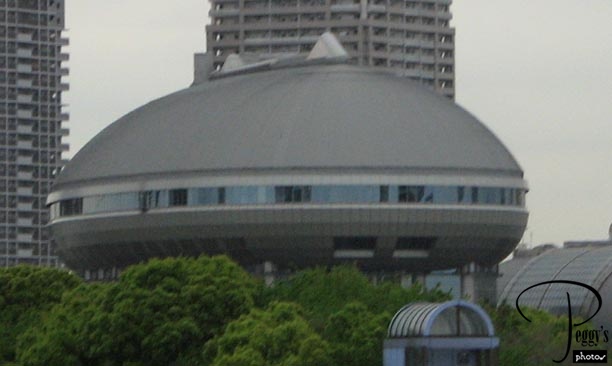
Close–up of the mushroom.

Odaiba
Narita Airport

It took about 1 1/2 hours to reach the Narita Airport to catch our flight home. There were many shops and restaurants at the airport to help you dispose of whatever yen you had left. Then through the security lines where I was asked if they could search my carry–on bag. Of course, they could. The security agent took out six small boxes from my suitcase and asked me what was in each of them. I said a cup, powdered green tea, and four bottles of saki. It still took awhile for me to have an “aha” moment. I had packed the saki in my carry–on, saki is a liquid, you are not allowed to carry liquids on an airplane unless they fit in a one–quart plastic bag. I made a mistake that only the most inexperienced air travelers might make. The security agent put the two non–offending packages back in my suitcase and led me out of the security line with me having a package of saki in each of the pockets of my sweather jacket, one stuffed in my overstuffed tote bag, and one in one hand while dragging my carry–on behind me. I had to check my carry–on in if I wanted to keep the saki. I did this and the saki made it to LA in the airplane’s baggage compartment without breaking. Keith couldn’t get me a seat in business class with him––business class was completely full on our plane, so after he got on the plane, I didn’t see him again until we met up in the immigration line at the LA airport. But I was in a two–seat row and the next seat to me was vacant so I could stretch out and enjoy economy class. We had several bad spells of turbulence but mostly it was a smooth trip. The flight back to LA was almost two hours shorter than flying from LA to Tokyo, probably because we took a shorter route and were going with the jet stream. We left Tokyo Friday at 5:30 p.m., having a full morning and a full afternoon there, but we arrived in LA Friday at 11:15 a.m. and had another full Friday afternoon in California, making this Friday a 40–hour day. I loved my trip to Japan and hope that I will be able to make another trip there sometime.

Narita Airport
Museum of Madame Sun Yat-sen
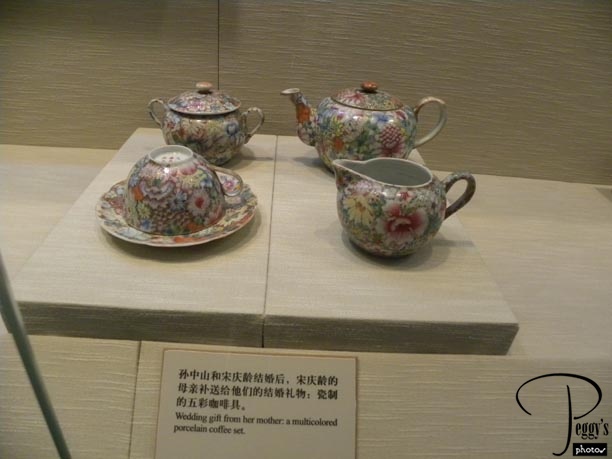
Beautiful gift of China from her mother. Her parents were against the marriage because Sun Yat–sen was 26 years older than Ching–ling.
